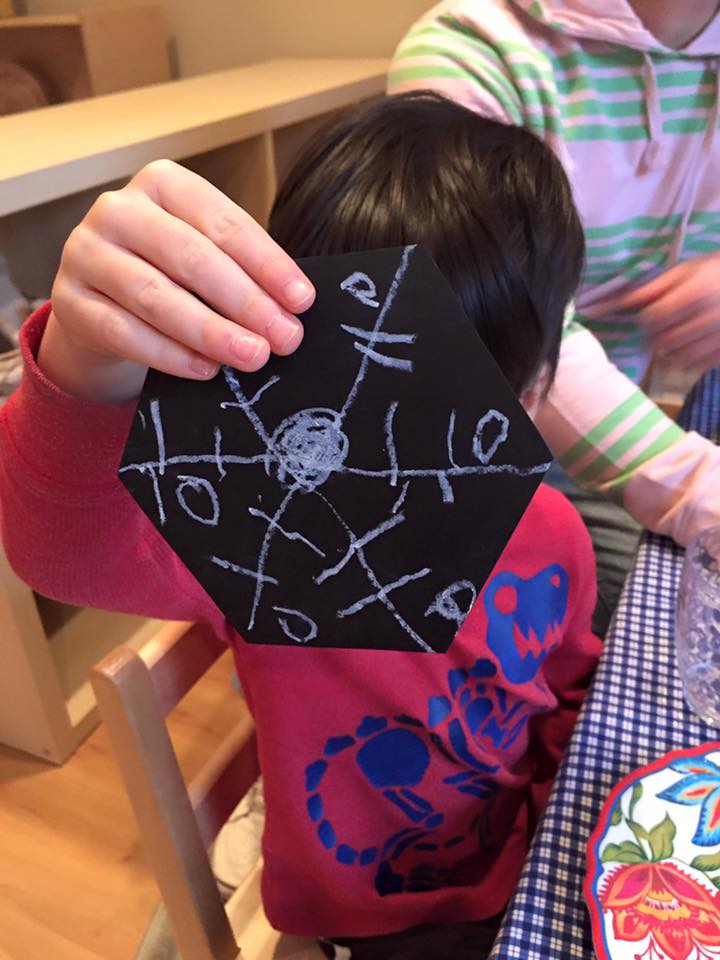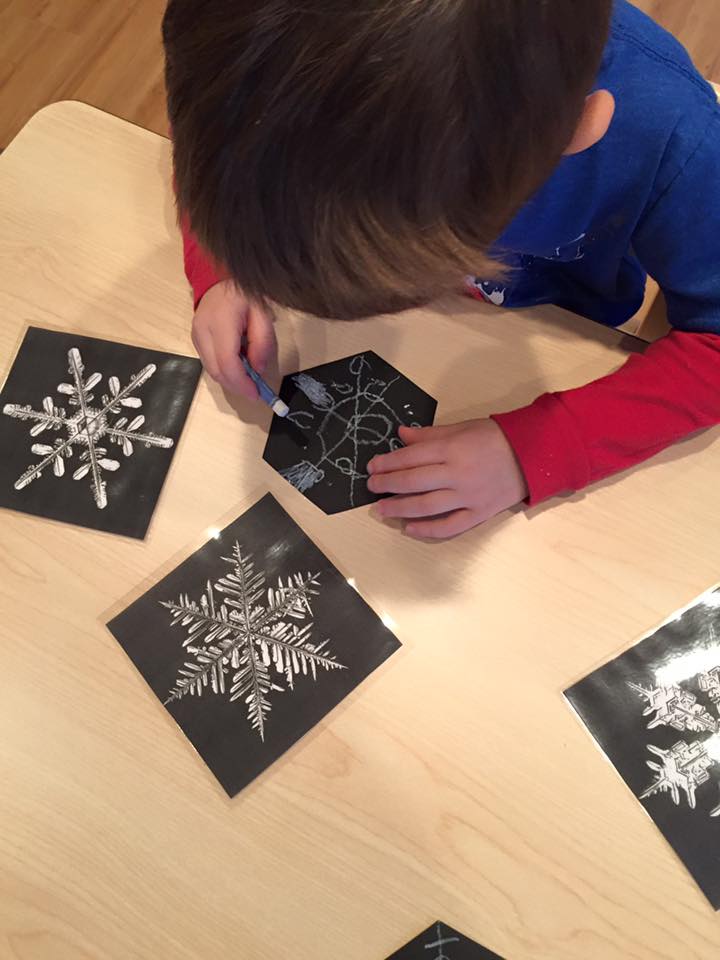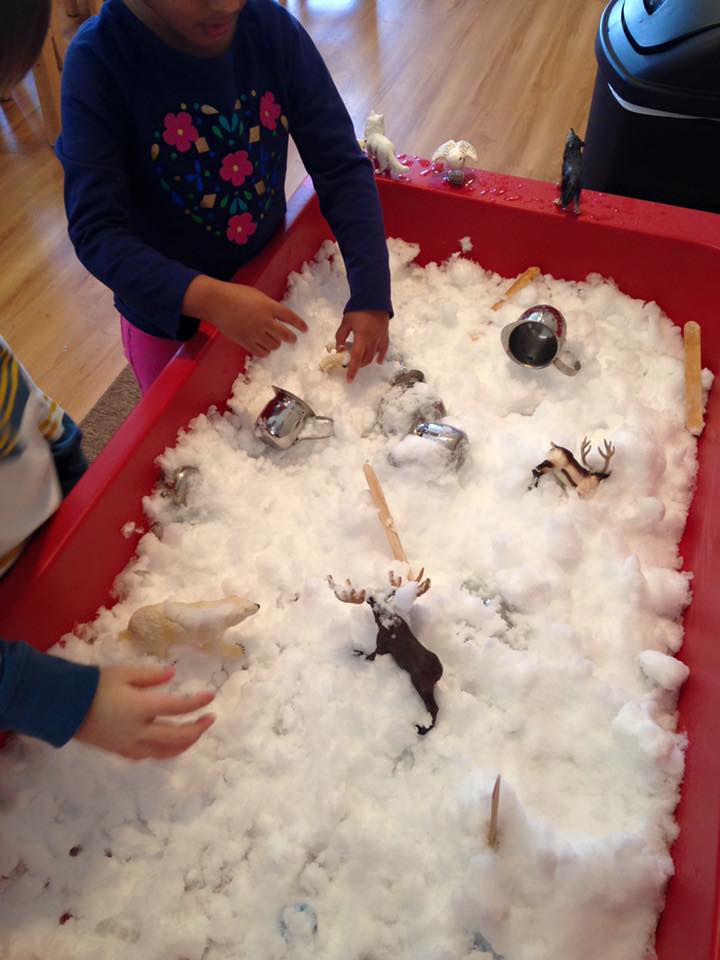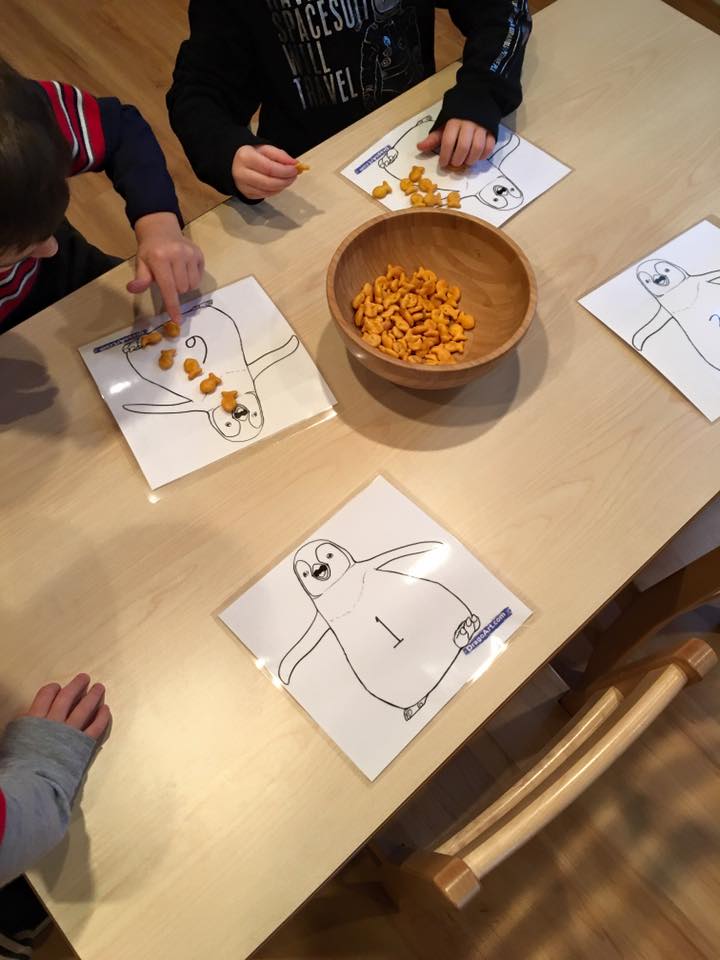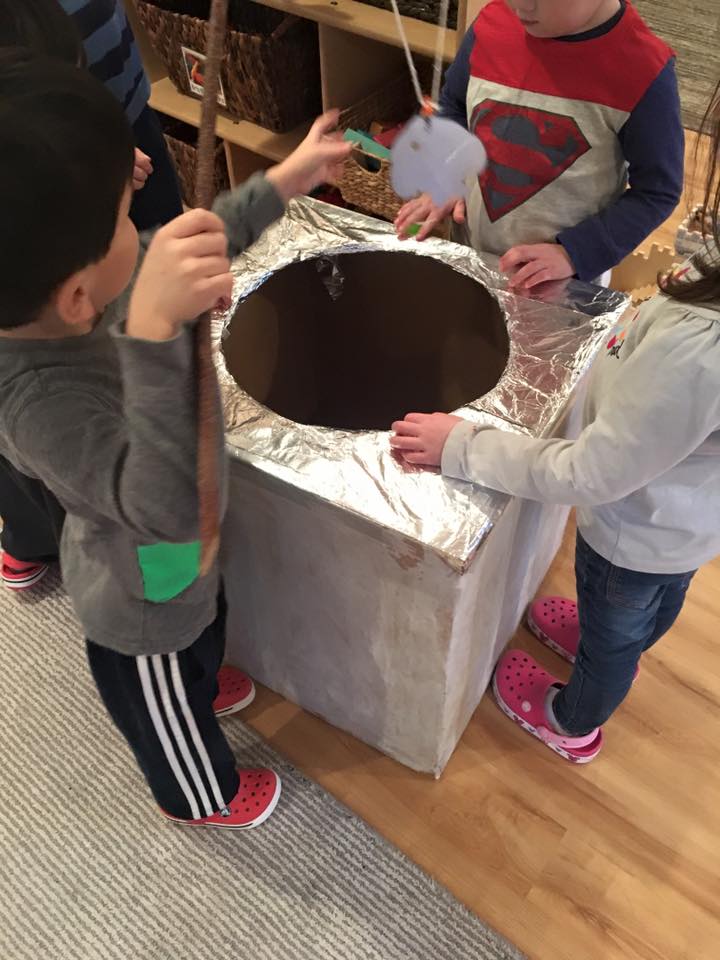We have all been busy learners since our last blog post! We have so much to catch you up on! We all came back to school after the holidays very excited to begin snowflake studies. We didn't have much snow of our own but that didn't stop us from exploring the science of snowflakes. Did you know that all snowflakes begin as a teeny tiny hexagon? As the snowflake falls from the sky, it begins to grow 6 symmetrical "arms" before it lands on the ground. The children were introduced to Wilson Bentley aka "Snowflake Bentley." He was the first person to successfully photograph snowflakes. He wanted to share the beauty of each individual snowflake with the world. It wasn't until many, many years after his discoveries that he was celebrated for his work. Inspired by the beauty of Snowflake Bentley's photographs, he became our Artist of the Month! Starting with the hexagon shape, the children designed their own snowflakes which included 6 symmetrical arms, just like real snowflakes have! The children's work proudly hung on the hallway bulletin board for all to see!
Following snowflakes studies, the children dove right in to a unit on penguins! The little guys are not sonly cute, they are also quite fascinating! We began by talking about the body parts of a penguin and the uniqueness of their body "features." The children learned to label several of the penguin's body part including the beak, webbed feet, claws, wedge-shaped tail and flipper. The children also measured themselves and discovered that they are taller than 16 of the 17 varieties of penguins in the world. The tallest penguin, the emperor penguin, stands at a whopping 4 feet tall! It was hard for all of us to imagine what it would feel like to stand face to face with a penguin! Fun fact: did you know that penguins in the wild can only be found in the southern hemisphere? This includes Antarctica, Australia, South Africa and the Galapagos Islands! Mostly in place with few predators since penguins do not fly.

